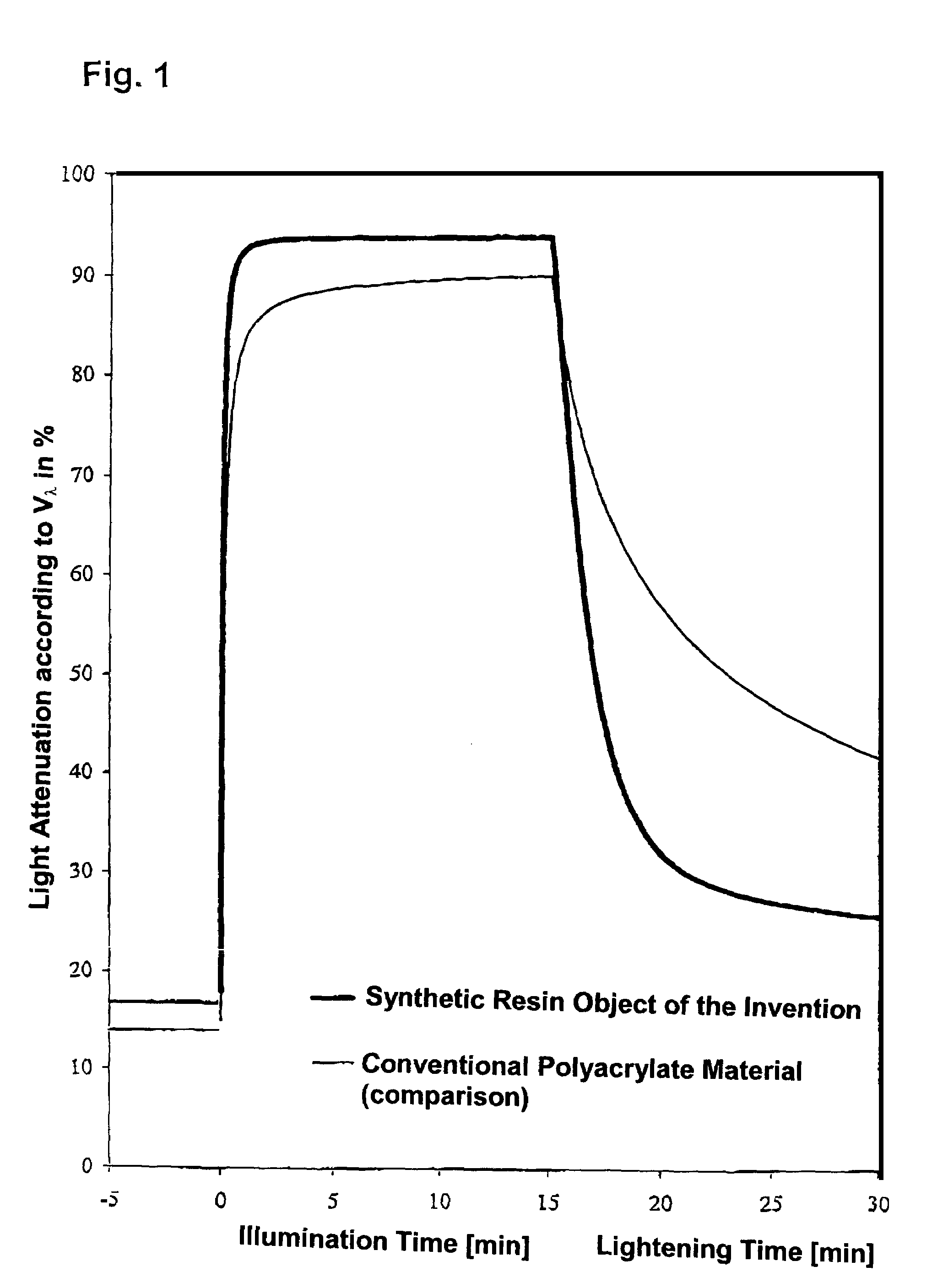Photochromic plastic object
- Summary
- Abstract
- Description
- Claims
- Application Information
AI Technical Summary
Benefits of technology
Problems solved by technology
Method used
Image
Examples
example
[0054]19.75 ml of a trifunctional aliphatic amine (T 5000 of Huntsman) and 0.75 ml of acrylic acid were mixed together in a beaker and allowed to react briefly. The mixture, which was thereby heated, was cooled again to room temperature. Furthermore, a mixture of 0.10 g spiro-9-fluoreno-13′-{3-[4-(N-piperidinyl)phenyl]-6-methoxy-3-phenyl-indeno[2,1-f]naphtho-[1,2-b]-pyran} in 17.5 g TMPTMA (Röhm GmbH) was prepared and stirred at 50° C. until a clear slightly light blue solution was obtained. 3.5 ml of this mixture together with 1.90 ml difunctional aliphatic isocyanate 316 (Bayer AG) and 0.065 g peroxide TBPND (Peroxidchemie) were added to the cooled amine acrylate mixture and mixed thoroughly. The resulting mixture was then cast between two PET films to form a photochromic film. Final cross-linking was effected in an oven at 84° C. for an hour.
[0055]As an alternative, the photochromic dye(s) can also be stirred into the amine acrylate solution.
[0056]FIG. 1 shows the darkening and l...
PUM
| Property | Measurement | Unit |
|---|---|---|
| Temperature | aaaaa | aaaaa |
| Polymer network | aaaaa | aaaaa |
| Transparency | aaaaa | aaaaa |
Abstract
Description
Claims
Application Information
 Login to View More
Login to View More - R&D
- Intellectual Property
- Life Sciences
- Materials
- Tech Scout
- Unparalleled Data Quality
- Higher Quality Content
- 60% Fewer Hallucinations
Browse by: Latest US Patents, China's latest patents, Technical Efficacy Thesaurus, Application Domain, Technology Topic, Popular Technical Reports.
© 2025 PatSnap. All rights reserved.Legal|Privacy policy|Modern Slavery Act Transparency Statement|Sitemap|About US| Contact US: help@patsnap.com


